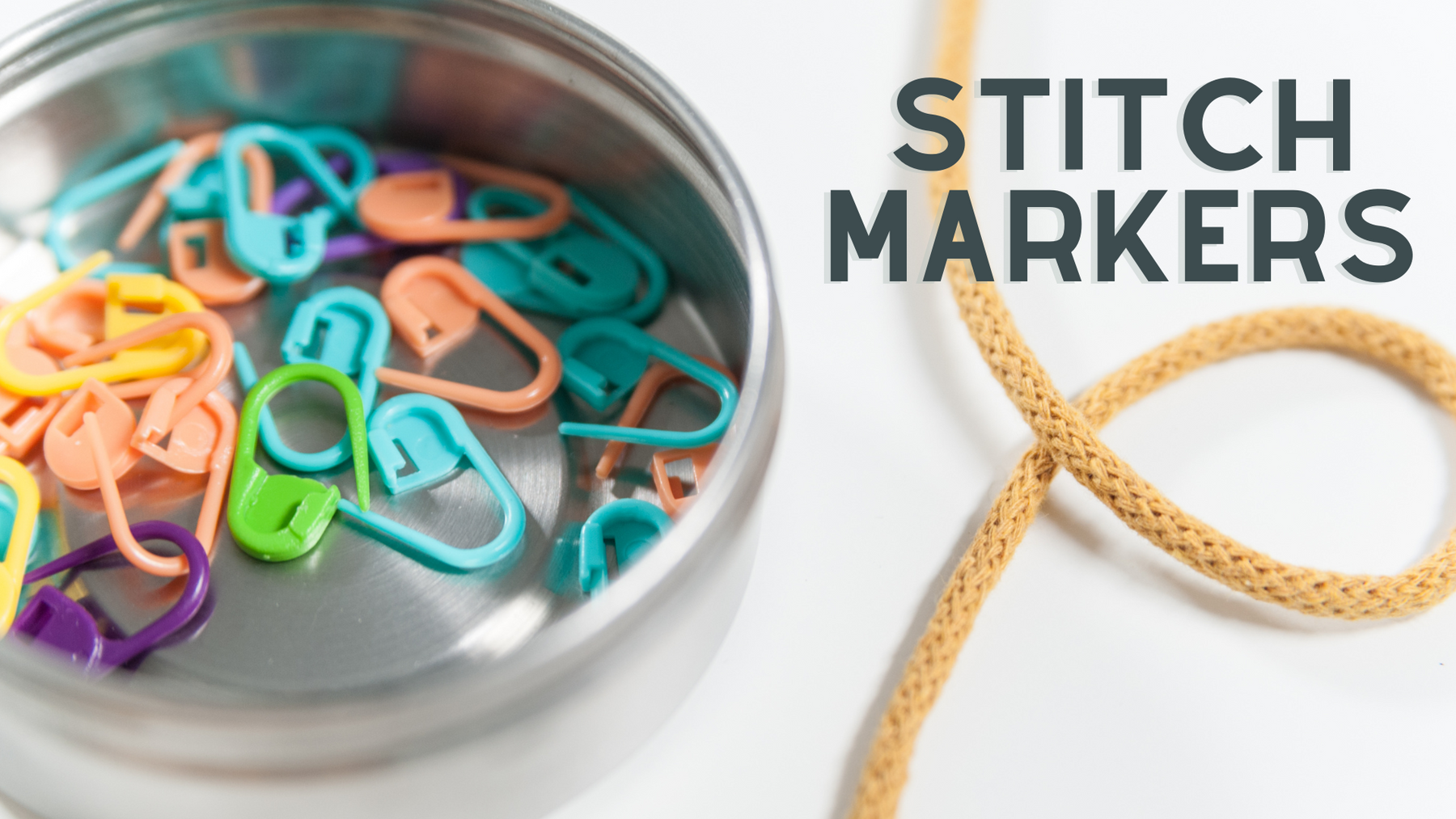
Stitch Markers Unveiled: Mastering Placement, Slipping, and Usage in Knitting
In knitting, a stitch marker is a small, often removable, tool used to mark a specific point or stitch in your knitting project. It serves as a visual reference point, helping you keep track of important sections, pattern repeats, shaping points, or any other areas that require attention or need to be easily identified.
Stitch markers can be made of various materials, including plastic, metal, or even pieces of contrasting yarn. They come in different shapes and sizes, such as rings, clips, or locking mechanisms. Some stitch markers are designed to be slipped onto the knitting needle, while others can be attached directly to the knitted fabric.
By placing stitch markers strategically in your knitting, you can simplify complex patterns, maintain stitch counts, and navigate through shaping techniques with ease. They provide a visual cue, reminding you when to perform specific actions or indicating where modifications or adjustments need to be made.
Stitch markers are especially useful when working on projects with multiple pattern repeats, lace knitting, cable designs, or garments with shaping elements. They enable you to focus on your knitting without constantly counting stitches or referring back to the pattern instructions.
Whether you're a beginner or an experienced knitter, incorporating stitch markers into your knitting process can help you stay organized, maintain accuracy, and ensure consistent results. They are valuable tools that add convenience and efficiency to your projects, allowing you to enjoy the art of knitting with confidence and ease.
CIRCULAR STITCH MARKERS
Circular stitch markers are an invaluable tool in knitting that helps you keep track of specific points or sections in your project. These stitch markers are small loops that are placed directly onto your knitting needle in between stitches. They mark a point between one stitch and the next, serving as a reference point as you work your way through the pattern.
When you encounter a circular stitch marker during your knitting, you will follow these steps:
- Work the stitch prior to the marker as instructed in the pattern.
- Slip the circular stitch marker from the left-hand needle to the right-hand needle, without knitting or purling it.
- Continue working the stitch following the marker according to the pattern instructions.
By slipping the circular stitch marker from one needle to the next each time you come across it, the marker stays in the same place, between stitches, as you progress in your knitting. This helps you easily identify the marked point and ensures consistency throughout your project.
Note that some knitting patterns may include a specific instruction to slip the marker (often indicated as "SM" or "slip marker"), while others may not explicitly mention it. If the pattern doesn't provide instructions, simply slip the circular stitch marker from one needle to the next whenever you encounter it.
Using circular stitch markers allows you to track pattern repeats, shaping points, or other areas that require attention or need to be easily identified. They provide a visual cue, keeping you organized and ensuring accuracy in your knitting.
Remember to choose circular stitch markers that are suitable for the size of your knitting needles and won't disrupt your knitting flow. They can be easily moved along the needle and provide a helpful guide as you progress through your project.

LOCKING STITCH MARKERS
These stitch markers can be opened and closed, allowing you to attach them directly to a single stitch or place them within the fabric of your knitted piece.
When using locking or removable stitch markers, consider the following:
- Marking a Stitch:
- Open the stitch marker and attach it directly to the stitch you want to mark.
- This type of stitch marker stays in place as you continue working, even when the fabric grows below it. It serves as a reference point for future instructions or as a visual cue for specific stitches.
- Marking a Point in the Fabric:
- Open the stitch marker and place it within the fabric at the desired point.
- As you progress with your knitting, the stitch marker may end up far below the row you're currently working on. In this case, you may need to remove it and move it up the stitch column to keep it in the appropriate location.
While removable stitch markers can be used in place of regular markers by placing them on the needle, circular stitch markers cannot be used as removable markers because they don't have the capability to open and close.

ABBREVIATIONS RELATED TO STITCH MARKERS
PM – Place Marker. When you see this in knitting instructions, it means you should place a circular marker on the needle at the point specified, between stitches. If a removable marker is called for, the instruction will be specific about this and say something like ‘mark the next stitch’ or ‘place a locking stitch marker at the end of the row’. In these circumstances, because you are marking the FABRIC, it’s necessary to use a removable marker, or thread a bit of waste yarn through the stitch itself. If it’s not specified, use a circular marker.
SM – Slip Marker. This is sometimes included to explicitly make clear that you have reached and passed a marker. You’ll work to the marker, slip the marker from the left-hand to the right-hand needle, and then proceed with the work.
Note: OFTEN, patterns do not explicitly include SM at each point where a marker is located. When there is nothing said about a marker, the default action you will take is to slip the marker from the left-hand to the right-hand needle, and then proceed with the work. This leaves the marker in place as a landmark for future actions.
BOR – Beginning of Round or Beginning of Round Marker. If you’re working a project ‘in the round’ on circular needles, you will often have a marker placed between the last stitch of a round and the first stitch of the next round. At the end of each round, you will slip this marker from the left-hand to the right-hand needle, leaving it in place.
CB – Centre Back or Centre Back Marker. This abbreviation is usually used in sweater patterns. The centre back marker is used to orient the patterning on a yoke or to indicate where the short rows will be worked at the back of the sweater. As is typical, if nothing is mentioned about this marker, simply slip it from the left-hand to the right-hand needle, leaving it in place as a landmark for future actions.
Using stitch markers in your knitting can be a game-changer. They provide visual cues and serve as reminders, helping you stay organized and on track with your knitting projects.

Leave a comment